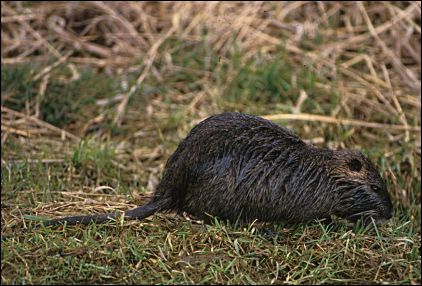

Late in 2002, newspaper reports appeared about Louisiana paying a $4 bounty for each tail of a Nutria. In parts of the Spanish-speaking Southwest, a nutria is an otter—but not these fellows. These are large marsh-dwelling rodents—virtual eating machines specializing on marsh vegetation. Native to Argentina, 13 escaped from a Louisiana captive colony in 1937 and about 150 more in a 1940 hurricane. Like many rodents, they are extremely prolific. So much so, that harvesting for the fur trade averaged 1.5 million pelts per year in the 1970s. With collapse of the fur trade, the population exploded, and damage to marshes sky-rocketed as protective plant cover was virtually destroyed. And thus the bounty.
What does this have to do with the Chihuahuan Desert region? Nutria
were released or escaped into wetlands in several parts of the northern desert. By the
1990s, eastern drainages coming off the Sacramento Mountains were producing Nutria, and
areas along the Pecos may be infected. With so few wetlands left to us, every
threat—even those by big rats—is major.

Contributor: Arthur H. Harris, Laboratory for Environmental Biology, Centennial Museum, University of Texas at El Paso.
Desert Diary is a joint production of the Centennial Museum and KTEP National Public Radio at the University of Texas at El Paso.

Nutria. Photograph by John and Karen Hollingsworth, courtesy of the U.S. Fish and Wildlife Service.
New Mexico BISON-M account.